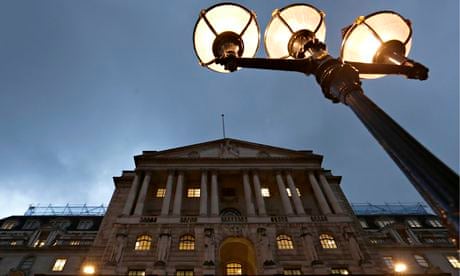After years of denial central banks are finally coming around to recognise that they must take responsibility for asset bubbles that can wreak economic havoc. Executive director of the Bank of England Andrew Haldane highlighted this earlier this month when he stated that managing the asset managers would "require fresh thinking on new policy tools".
But this ties into a far broader problem; namely, how should central banks counteract dangerous pressures in financial markets without generating substantial instability in the real economy?
The problem is that central banks must rely primarily on monetary policy to exert control over asset markets. Yes, regulation plays an important role but, as the late great Hyman Minsky taught us, the financial system is highly adaptive and central bankers require a cooling valve when they see markets getting too hot.
Unfortunately, if central bankers want to put the markets on ice they have to raise short-term interest rates. If they are pushed to raise these rates too high this can lead to a recession as lending dries up and real investment, as opposed to purely financial investment, crawls to a halt.
What central bankers need is a policy tool that can target financial overheating directly while minimising the impact the policy has on real, productive investment. The US economist Thomas Palley has provided just that in his new paper Monetary Policy After Quantitative Easing: The Case for Asset Based Reserve Requirements (ABRR).
The way that monetary policy works today is that private banks are required to hold a given amount of reserves – that is, cash balances at the central bank – for every loan they extend. The central bank then extends these reserves to the private banking system to set the overnight interest rate at which the banks lend. Palley's ingenious idea is that central banks place reserve requirements on the holdings of assets.
In such a scheme there would be additional reserve requirements for each asset class. So, there would be separate reserve requirements for stocks, bonds, mortgage securities and so on. The central bank could set these requirements at zero initially and then when they saw instability being generated in any given market they would raise the reserve requirements on that asset class. This would increase the cost of holding this type of asset and drive up the interest rate on it without directly affecting interest rates in the rest of the system.
An example might be instructive. Imagine that the central bank was concerned that the housing market was overheating. But at the same time the level of investment in the economy was not sufficient to generate general price inflation. The central bank could then raise reserve requirements on new mortgage issues. This would subdue over enthusiastic speculators in the housing market while leaving borrowing rates for those engaged in real, productive investment unchanged.
Palley points out in his paper, however, that the success of such a policy would be tied to which types of financial institutions were included in the new regulations. Ideally, the asset-based reserve requirements would have to be placed on the whole financial system. That would include not just commercial banks, but also shadow banks and financial intermediaries. This does not seem to me much of a problem, however, because regulators today are increasingly interested in bringing these new types of financial institutions into the regulatory fold and Palley's proposal would give them a means to do just that.
The only issue I would raise with Palley's proposal is that if we were to enact it today we would be doing so in an economic environment in which real investment and consumption are tied up with the financial sector in a most unhealthy manner. The partial recoveries in the economies of the US and the UK are reliant on rising asset prices in the housing and stock markets. These are driving not just increased residential investment but also consumption among the top end of town as the 'wealth effect' kicks in.
But these problems reflect more the unbalanced and precarious state of many developed economies than they do on Palley's excellent proposal. The reliance of developed economies on asset price increases attests not just to their fragility but also to unequal income distribution and general unfairness. Dealing with these problems requires different solutions. Palley's proposal furnishes us with new tools that we can utilise moving into the future and it should be considered by central banks the world over immediately. But it is no panacea.








Comments (…)
Sign in or create your Guardian account to join the discussion